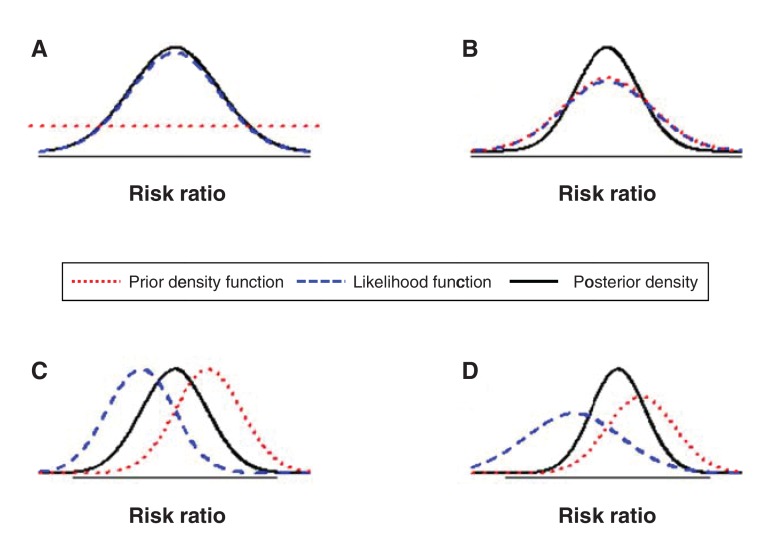Figure 1.
Role of the prior distribution in a Bayesian analysis. A Bayesian analysis combines the information on the unknown parameters (e.g., the pooled risk ratio) from the prior distribution and from the observed data in accordance with Bayes' theorem. The result is expressed as the posterior distribution of the unknown parameters. The prototypical figures above illustrate how the posterior distribution is influenced by both the prior distribution and information from the observed data. Each figure presents the prior density function, the likelihood function (or the information from the observed data) and the posterior density. When a function is concentrated over a narrow area it is more informative. The more spread out a function, the less informative it is. In Figure A, a vague prior distribution is used. The flat red line indicates that the prior distribution is highly spread out, placing equal weight on all possible values. The posterior distribution (black line) is determined almost entirely by the observed data (blue line). Therefore, the prior distribution has little or no influence over the final results. In the remaining figures, the prior distribution is more informative and has an influence on the final results. In Figure B, both prior distribution and likelihood are in perfect agreement, resulting in a posterior distribution that is more informative than either of them. In Figure C, the prior distribution and the likelihood are equally informative, resulting in the posterior distribution's being between them. In Figure D, the prior distribution is more informative than the likelihood, resulting in a posterior distribution that is located closer to the prior distribution.

